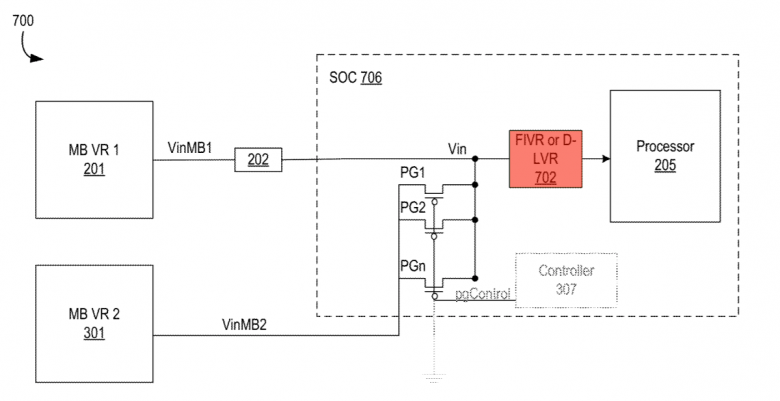The whole story dates back to somewhere before 2012, when Intel developed the generation Haswell decided to move the voltage regulator from the motherboard to the processor. At the time, this was justified by an effort to simplify motherboards and reduce their production costs (at a time when development of motherboards) Haswell started, Intel itself was still producing). The voltage regulator itself has a certain consumption, so its transfer to the processor increases the TDP of the process (although it reduces the consumption of the board).
With the development of the generation Skylake Intel decided to back away from this solution and returned the controller from the processor back to the board. It has been rumored that the reason is just the TDP of the processor, which with each passing generation (from Ivy Bridge) grew and Intel probably didn’t want it to climb too 90 watts. On the other hand, a few years later, with the release of HEDT / Server Skylake-X the controller has returned to these large processors. Already in 2015, information appeared that the controller would return to desktop processors with a generation Ice LakeBut those in the end – for a failed 10nm process that didn’t handle the usual clock speeds – weren’t released.
Having traveled the regulator for five years, I dared (in 2017) call the situation a soap opera. It probably wasn’t an exaggeration – since the first reports of Skylake-X almost another five years passed and little traveled them back on stage. Current events are to be linked to a January 2020 patent describing the Digital Linear Voltage Regulator (DLVR). It does not replace the standard controller, but rather complements it. Its goal is to increase the efficiency and accuracy of voltage regulation, which is reflected in lower overall consumption, especially at lower and medium currents.
According to the Intel chart, it should allow a voltage reduction of around 160 mV at currents up to 40 A, which should (up to) 40 A result in up to 25% lower consumption. Intel further points out that the saved energy can also be used to increase performance (= cycles) by ~ 7%. Information about the new controller corresponds to Intel’s (already) roadmap, which was leaked in March Raptor Lake we see the note “New DLVR Power Delivery”.
So far, everything is pretty clear. Now the ambiguities. The text of the patent in the context of DLVR speaks of adding a small cheap piece of silicon to the motherboard, but the scheme paints it on SoC (ie at the level of the processor case).
Although it may seem from the user’s point of view that it is quite secondary where the DLVR settles, it can end up being quite significant. It can affect how much the generation will Raptor Lake compatible with current boards (600 series) developed for Alder Lake. Specifically whether Raptor Lake when fitted to current boards, it will enjoy the benefits of DLVR (= lower power consumption, higher power, higher energy efficiency) or not. The second ambiguity concerns whether DLVR will be available on the desktop at all. Although unofficial sources talk about desktop boards, the official leaked roadmap mentions DLVR only in the mobile sty (above, not below). Whether or not DLVR will be present on the desktop, or just wanted to emphasize the greater benefits in the mobile segment by introducing in the notebook, it is still unclear.
In any case, this is another novelty of the generation Raptor Lake versus Alder Lake. We can summarize them:
- improved large cores (number 8 remains) Raptor Cove, which probably differ in cache changes, which bring some increase in IPC
- double the number (16) of small cores Gracemont
- LPDDR5X fast memory support (in notebooks)
- faster memory support (DDR5-4800 -> DDR5-5600)
- DLVR digital voltage regulator (at least in notebooks)
According to VideoCardz, some improvements will be made subject to the use of the new 700 Series chipsets.
–




